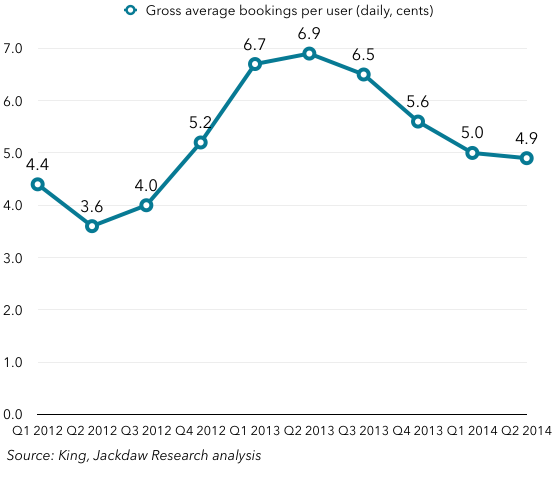Microsoft finally announced today its intention to acquire Mojang, the maker of the Minecraft game, after days of rumors. Throughout the last few days, I’ve been wondering why Microsoft would want to buy Mojang, and now that the news is official, and we have commentary from Microsoft, I’m none the wiser. This is a somewhat baffling acquisition, unless it’s been made purely as a financial investment, and there are much better uses for that money in building Microsoft’s business and ecosystem.
One-hit wonders abound, but Minecraft is different
There are lots of one-hit wonders in the mobile gaming market in particular – King, Zynga, Supercell and others have had one huge hit and have thereafter struggled mightily to repeat the success of that one game with subsequent releases. Mojang is also a one-hit wonder, but Minecraft is very different from FarmVille, Clash of Clans or Candy Crush Saga, in several ways:
- It’s not just a mobile game, though it’s one of the highest-grossing in that category. It’s also available on PCs and consoles
- It’s not a flash in the pan like some of those other games – Minecraft appears to have real longevity, having launched in 2009 and showing little sign of slowing down yet
- It has a totally different monetization model from those other games, booking essentially all its revenue from a customer up front with a high-ticket one-off purchase, rather than in-app purchases or advertising
- Its customer base likely skews significantly younger than most popular mobile games (and perhaps games in general), in that it is very popular among kids of all ages as well as adults
- Minecraft is to a far greater extent than other games an ecosystem rather than just a game, with hundreds of books and digital material helping players to learn how to use it effectively.
So, this acquisition isn’t the same as buying one of those big mobile game makers – Microsoft clearly isn’t buying into a one-hit wonder and hoping to replicate its success. And it’s a good thing, too, since the founders are all moving on with the acquisition. But what is Microsoft after?
Bringing content in-house has rarely worked out well
There’s a long history of platform owners bringing certain content in-house, for a variety of reasons:
- Generating exclusivity around the content for the owned platform, which is in fact what Microsoft did with the Halo franchise. That’s clearly not the intention here, however.
- Bringing content to an owned platform the current owner won’t bring it to. For example, bringing Minecraft to Windows Phone. However, this is an enormously expensive way to achieve that objective, and Microsoft could easily have covered the costs of porting and maintaining Minecraft on Windows Phone for far less.
- Wanting to capture more of the revenue opportunity associated with popular content, rather than splitting or even handing over all the revenue to the content owner.
None of these really make a great deal of sense in the context of the Mojang acquisition, except possibly the last one. But that’s hardly a strategic rationale – rather, a simple financial transaction. Perhaps Microsoft heard that Minecraft might be for sale, and didn’t want it to end up in the hands of major competitors who might withhold it from the PC or Xbox platforms. But that seems a little far-fetched, and none of the other reasons really make a lot of sense. Continue reading

